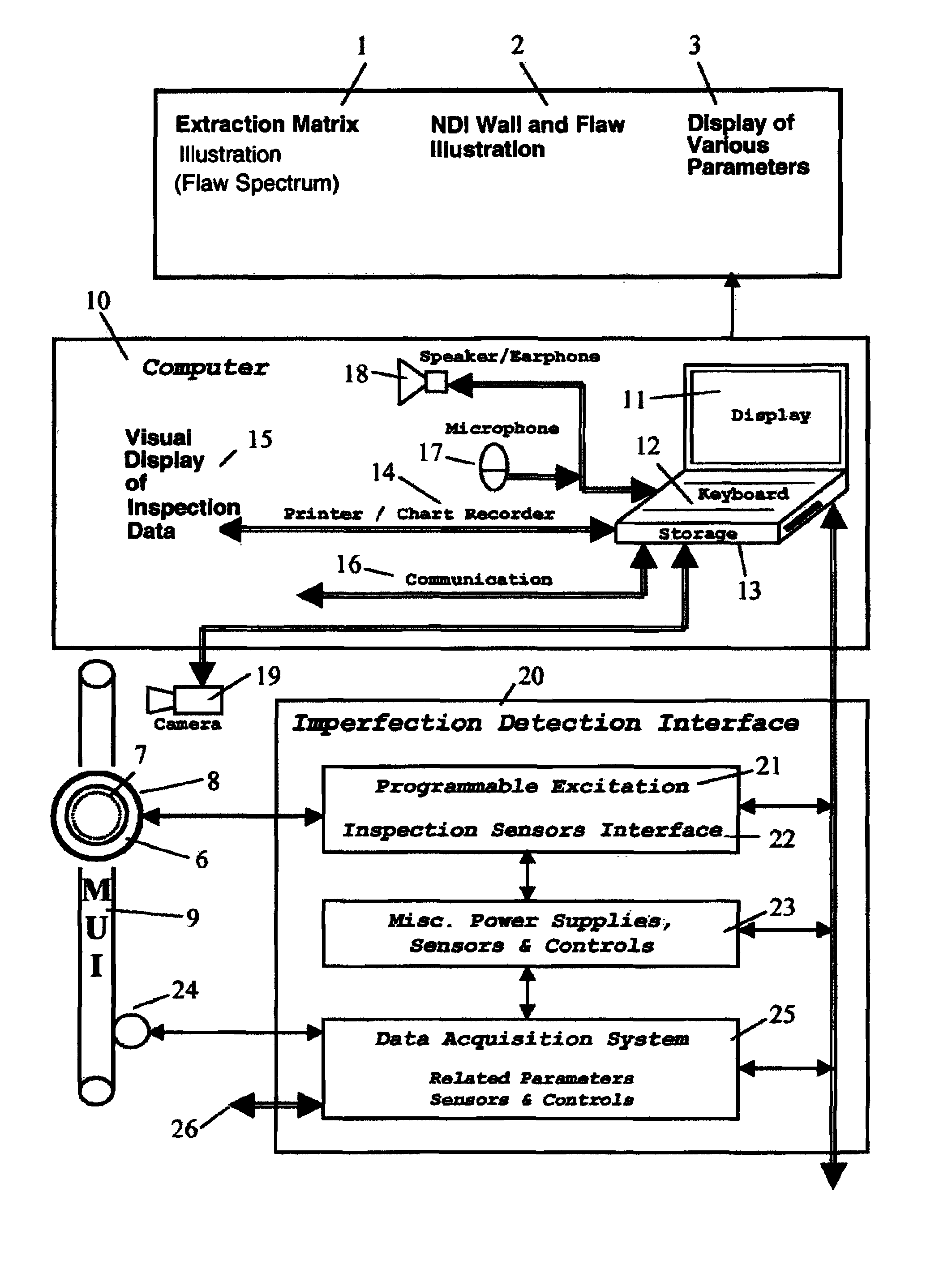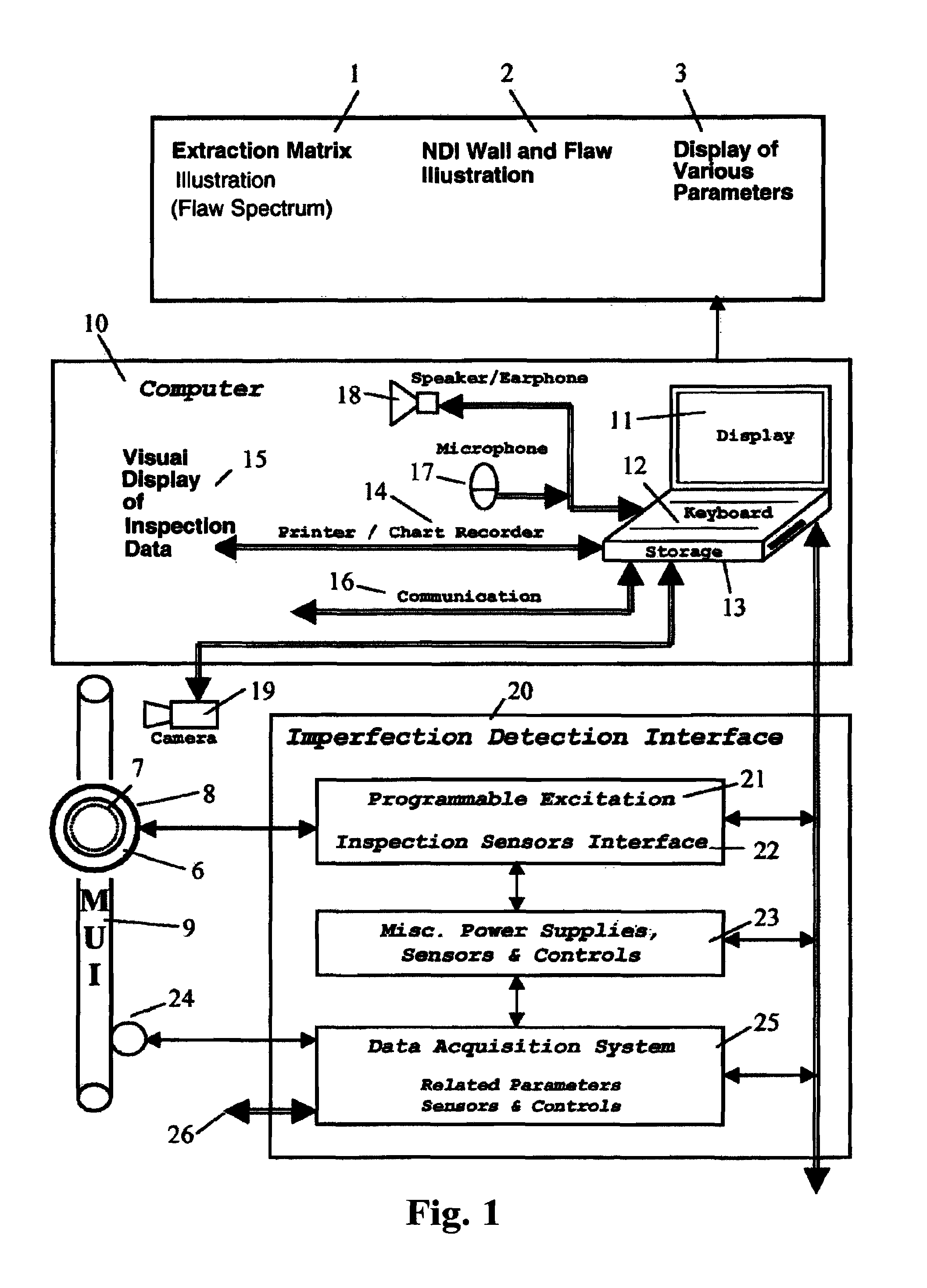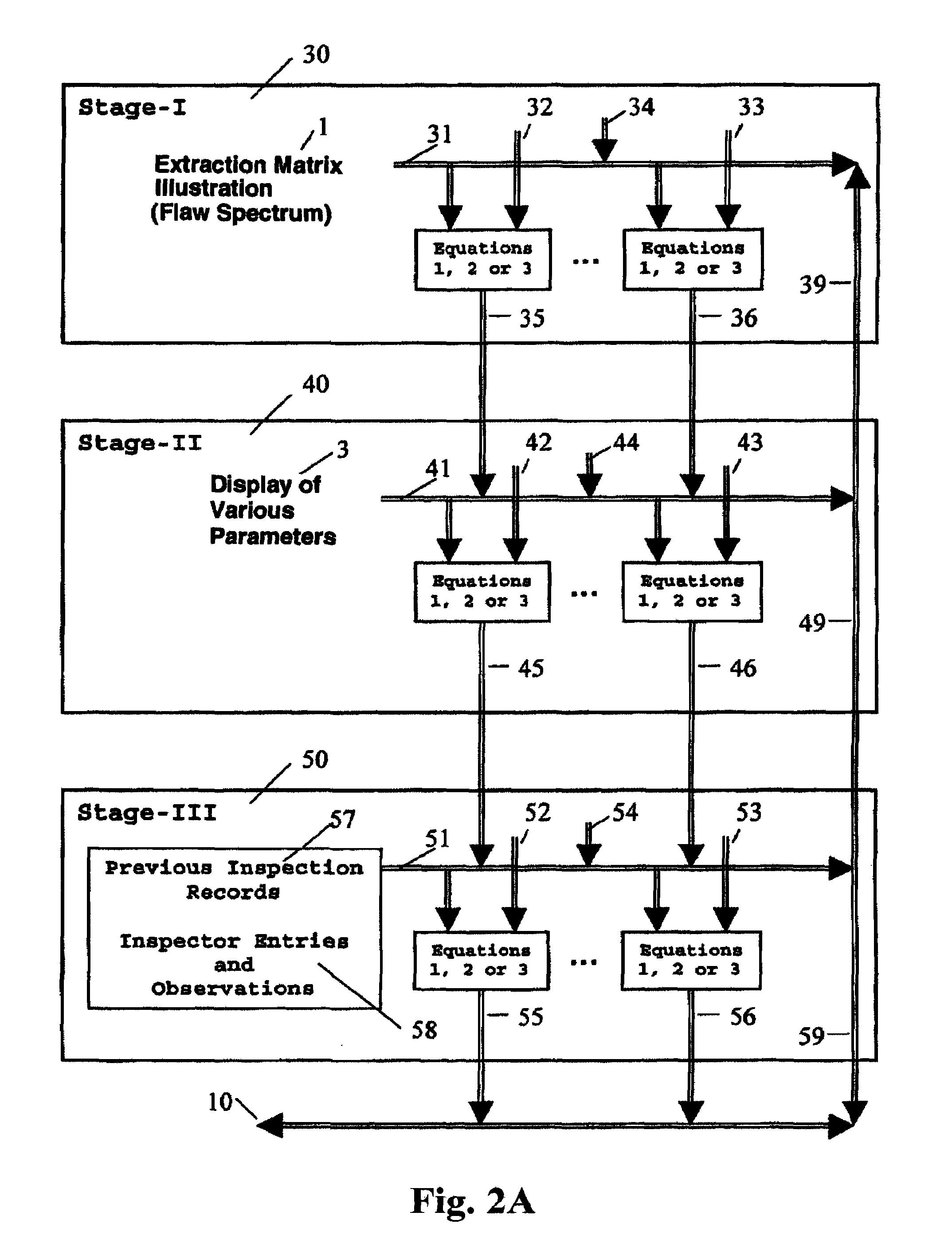Autonomous non-destructive inspection
a non-destructive inspection and autonomous technology, applied in the direction of speech recognition, structural/machine measurement, speech analysis, etc., can solve the problem that autonomous inspection can bring the cost of inspection down, and achieve the effect of reducing the cost of inspection and better monitoring
- Summary
- Abstract
- Description
- Claims
- Application Information
AI Technical Summary
Benefits of technology
Problems solved by technology
Method used
Image
Examples
Embodiment Construction
[0025]To understand the terms associated with the present invention, the following descriptions are set out hereinbelow. It should be appreciated that mere changes in terminology cannot render such terms as being outside the scope of the present invention.
[0026]Autonomous: able to function without external control or intervention.
[0027]Knowledge: a collection of facts and rules capturing the knowledge of one or more specialist.
[0028]Rules: how something should be done to implement the facts.
[0029]Imperfection: a discontinuity, irregularity, anomaly, inhomogeneity, or a rupture in the material under inspection.
[0030]Flaw: an imperfection that exceeds a specified alert threshold.
[0031]Defect: an imperfection that exceeds a specified threshold and may warrant rejection of the material under inspection.
[0032]Classification: assigning an imperfection to a particular class based on its features.
[0033]FIG. 1 illustrates a block diagram of an AutoNDI further illustrating inspection computer...
PUM
| Property | Measurement | Unit |
|---|---|---|
| thickness | aaaaa | aaaaa |
| thickness | aaaaa | aaaaa |
| length | aaaaa | aaaaa |
Abstract
Description
Claims
Application Information
 Login to View More
Login to View More - R&D
- Intellectual Property
- Life Sciences
- Materials
- Tech Scout
- Unparalleled Data Quality
- Higher Quality Content
- 60% Fewer Hallucinations
Browse by: Latest US Patents, China's latest patents, Technical Efficacy Thesaurus, Application Domain, Technology Topic, Popular Technical Reports.
© 2025 PatSnap. All rights reserved.Legal|Privacy policy|Modern Slavery Act Transparency Statement|Sitemap|About US| Contact US: help@patsnap.com



